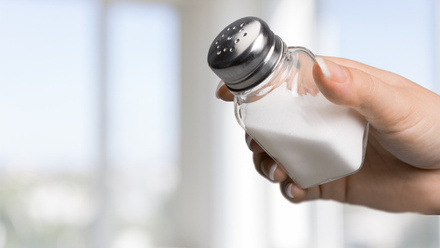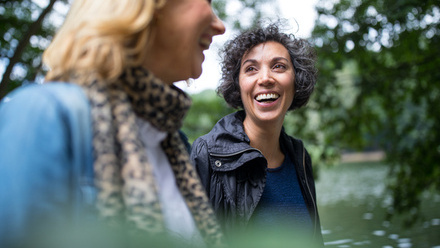The 5-A-Day message is one of the most well-known international health messages. Belinda Mortell explains the background and discusses how to achieve the recommendation on a budget
Do we eat enough fruit and vegetables?
Simply put, no we don’t! Typically, adults eat around four portions of fruit and vegetables per day, whilst children consume around three.
The latest information suggests that a mere 8% of children (11 to 18 years), 27% of adults (19 to 64 years) and 35% of those aged 65 years and over actually achieve the 5-A-Day recommendation. Those from deprived areas are less likely to achieve the recommendation, and females are often better than males when it comes to portions of fruit and vegetables.
So, most of us are not meeting the recommendation for five portions of fruit and vegetables a day.
Why is it so difficult to eat 5-A-Day
There are lots of reasons why we choose the foods we do and sometimes it’s hard to introduce changes to our regular diets. Many people think that it’s too expensive to
eat lots of fruit and vegetables, whilst others say they don’t have the cooking skills, that there is too much preparation required or that they don’t like the taste.
The price of fruit and vegetables is one of the main concerns. In fact, cost is a barrier for about a third of people who don’t eat enough fruit and vegetables. Some say they simply can’t afford them whilst others say they can’t buy as many fruit and vegetables as they would want to.
But it doesn’t have to be difficult or more expensive! The World Cancer Research Fund reported that it currently costs about 42 pence a day to eat your 5-A-Day. For example, a British Savoy cabbage provides around 10 portions and costs around 70 pence. Frozen and canned fruit and vegetables can be great value for money too.
Food poverty - a growing problem
Food poverty is a situation where people find it difficult to purchase an adequate and nutritious diet. It’s complex, affecting people with low incomes as well as those who have limited access to transport or poor cooking skills. Unfortunately, the prevalence of food poverty seems to be increasing. In 2016, 5.6% of people suggested they were struggling to get enough food to eat and 4.5% reported they had gone a full day without anything to eat at least once.
There are significant differences in nutrient intake between the poorest and richest in our population. The poorest people eat less fish, fruit and vegetables, fibre, protein and saturated fat than the richest, but more sugar. It can also affect how tall children grow, for instance by the age of 10, affluent children were around a centimetre taller on average than the less affluent.
Fruit and vegetables are key to a healthy diet for many reasons – see our ‘5-A-Day’ article – so it’s concerning that many people aren’t reaching the recommended intake. But there’s simple things we can all do to increase our intake of these great foods cheaply and easily.
Remember these only count once:
- 150ml fruit juice, vegetable juice or a smoothie
- 80g beans (any, such as dried, canned)
What are the consequences of food poverty?
Not everyone impacted by food poverty is hungry. People may have enough food to feel satisfied, but have a diet that doesn’t supply the right levels of micronutrients (vitamins and minerals), dietary fibre and other key nutrients like antioxidants (valuable plant nutrients).
There’s plenty of scientific research showing that fruit and vegetables are valuable parts of our diet. They provide all sorts of nutrients including vitamins, minerals and fibre. Most also have a higher water content, making them lower in calories than many other foods.
Increasing our intake of fruit and vegetables increases our fibre intake and one major benefit of that is to help relieve (or prevent) constipation. One in three children and one in seven adults in the UK are affected by constipation at any time and relief of constipation usually occurs when people eat enough fibre. When you eat more fibre, it’s important to drink plenty of fluids. Eating regular meals and keeping regularly active can also help.
Look to the community for affordable and local home-grown food and support
- Breakfast clubs - Breakfast clubs at school serve a range of healthy options including cereals, fruit juices and toast.
- Lunch clubs and community meal services - Community meal services (Meals on Wheels) and lunch clubs are usually run by the local authority but may be run by the Women’s Royal Voluntary Service (WRVS) or the local Age Concern. Usually run entirely by volunteers.
- Food distribution schemes - Look out for local projects that re-distribute surplus food from shops and supermarkets to day centres and hostels for the homeless.
- Box schemes - Receive a weekly box of fresh fruit and vegetables direct from a farmer. Get them delivered or collect from a centralised point. Content varies so be prepared to be surprised!
- Food growing schemes - Food growing schemes pop up in some areas and include growing for resale, schools growing projects, growing on allotments and training and therapy projects.
Additionally, people who eat plenty of fruit and vegetables tend to be less overweight and have better long-term health. Fruit and vegetables are mostly lower in calories and fat compared to many other foods. Considering that one in three children in the UK are now overweight or obese, it’s particularly important to encourage children to eat more fruit and vegetables.
Research clearly shows that an unbalanced, nutritionally poor diet is also associated with an increased risk of heart disease, stroke and diabetes. One of the greatest health benefits appears to be provided from the humblest of UK produce such as apples, pears and cabbage since these are thought to provide the greatest protection from cancer. A poor diet is thought to be responsible for 33% of all cancer deaths.
In addition, unbalanced diets are also associated with increased risk of falls and fractures in older people. In children, poor nutrition can increase the risk of stunting, iron deficiency anaemia and also impact learning and normal development.
Shopping on a budget
With a bit of planning and some knowledge about what to buy, it’s not difficult to find healthier options at great prices. Here’s some cheap and easy solutions to help you reach your 5-A-Day:
- Plan ahead – write a shopping list and avoid impulse purchases
- Buy fruit and vegetables in season – they’re often cheaper and tastier
- Shop at a market – you can get great deals on fruit and veg
- Grow your own – plant up containers with tomatoes, cucumbers or beans
- Buy fruit and veg loose rather than pre-packed
- Try value brands – they taste just as good for a lower price
- Use tinned or frozen fruit and vegetables
- Cook from scratch – rely less upon “ready” or manufactured foods like takeaways or processed foods
- Grab a deal – look out for weekly fruit and vegetables reductions at supermarkets and local shops
- Cut food waste – use up leftovers or any that are going out of date in soups and stews or eat leftovers for lunch or freeze for another day
- Check to see if you have a local community farm or fruit and veg box scheme; these can be great value and are full of seasonal produce
Looking for more help to increase the amount of fruit and vegetables you eat?
Look online. The internet is full of quick and simple fruit and vegetable recipes such as curries, stews, soups and puddings.
Here’s a few ideas:
NHS Choices
Some great advice on eating 5-A-Day on a budget
Trussell Trust
Trussell Trust foodbanks and other local community groups run cooking classes which help people cook easy healthy meals
The BBC iWonder guide to 5-A-Day
Includes ideas about how to make vegetables taste amazing







